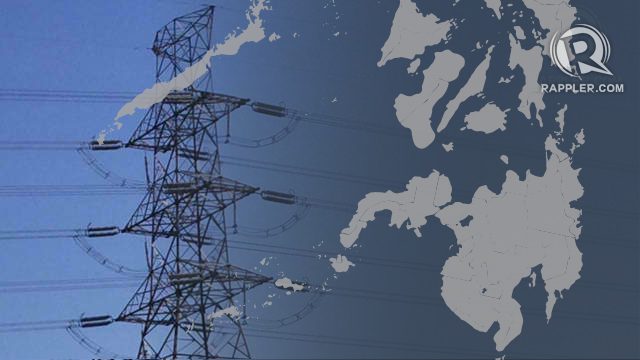SUMMARY
This is AI generated summarization, which may have errors. For context, always refer to the full article.

MANILA, Philippines – The Energy Regulatory Commission (ERC) has green lighted a study on the proposed Visayas-Mindanao interconnection project of the National Grid Corporation of the Philippines (NGCP).
“We provisionally approved the application for the feasibility study to be conducted to interconnect Visayas and Mindanao grids,” said ERC Commissioner Jose Vicente Salazar in a media briefing.
With the approval, the NGCP can immediately begin the study for the Visayas-Mindanao Western Route (Cebu-Negros-Zamboanga Del Norte) Interconnection Project phase 1.
The grid operator had stressed the urgency for the Visayas and Mindanao grids to be interconnected in its 10-page application, pointing out that it would “open more investment opportunities in Mindanao, both in terms of additional power generation and industrial loads.”
Power sharing necessary
“With an unexpected substantial capacity in the Mindanao grid due to the upcoming power plants and the possible deficiency in the Visayas grid, power sharing of reserves must be immediately effected between them,” the NGCP also said.
According to the NGCP, 2,400 megawatts (MW) of additional capacity is expected to be injected into the Mindanao grid between now and 2018.
The additional capacity is expected from:
- FDC power plant (405MW by 2016)
- GN Power Coal (450MW by 2017, 150MW by 2018)
- Therma South Coal (300MW by 2015, 150MW by 2017, 150MW by 2018)
- SMC Davao Coal (150MW by 2015, 150MW by 2016, 150MW by 2017, 150MW by 2018)
Generating company (genco) Aboitiz Power also just inaugurated its new 300MW facility in Davao last month.
The genco, however, estimated that it would not be enough to address Mindanao’s power deficit, explaining that the region would need at least 300MW of new power capacity annually for the next 5 years to resolve the issue.
Also in January, President Benigno Aquino III convened an emergency meeting to tackle the problems in Mindanao’s grid infrastructure.
Energy officials’ most pressing concerns include the grid’s vulnerability to attacks as well as breakdowns due to its isolated nature.
At the same time, the Department of Energy (DOE) has called for more private sector investment in the power industry to boost Visayas’ energy supply in the face of a possible shortage.
The Visayas grid is expected to receive an additional 675MW from 11 projects until 2020, while 18 projects with a total capacity of 601MW are in the indicative stage, based on DOE estimates.
“These power exchanges between the two regions can only be realized through the implementation of the Visayas-Mindanao interconnection project,” the NGCP said.
The grid operator added that, similar to other projects, it must initially conduct a feasibility study to determine the best and safest route for the cables and landings of the interconnection.
Long time coming
The interconnection project was first conceptualized way back in 1984, based on a study done by the Japan International Cooperation Agency (JICA).
In 1996, the National Power Corporation initiated the implementation of the connection project and tapped Norwegian firm Norconsult International AS to complete the feasibility study. The national government, however, deferred this.
In 2004, the National Transmission Corporation and the DOE revised the proposed interconnection project, but it still wasn’t implemented.
Then, in 2011, the DOE directed the NGCP to review previous studies. The NGCP engaged the services of China Electric Power Research Institute to conduct a study.
The new study found several significant environmental risks that the proposed Visayas-Mindanao interconnection route from Leyte to Surigao could encounter. These include potential earthquake hazards in the Surigao Strait.
This prompted the NGCP to consider an alternate route by exploring the western route for the connection. – Rappler.com
Add a comment
How does this make you feel?
There are no comments yet. Add your comment to start the conversation.